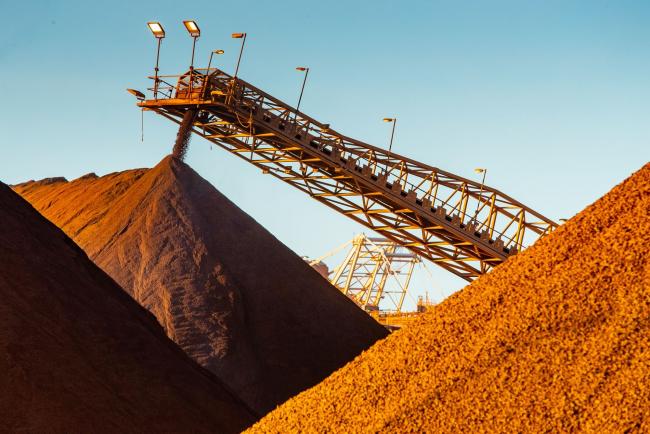(Bloomberg) -- Iron ore has yet to find a bottom, extending a steep sell-off on concern Chinese demand may weaken this half as supplies rebound.
Futures in Singapore fell back into the $80s a ton, while the contract in Dalian hit the lowest since May. On Tuesday, Fortescue Metals Group Ltd. Chief Executive Officer Elizabeth Gaines said that there’s potential for mainland demand to soften this half compared with the first six months of 2019.
The steel-making commodity has collapsed as the U.S.-China trade war hurts appetite for industrial commodities at the same time that iron ore’s fundamental drivers weaken. This week, the China Iron & Steel Association said it expected price declines to continue as mainland consumption falters. The sudden retreat has driven futures and spot prices into bear-market territory.
“Mills in China are reportedly reluctant to increase iron ore stockpiles given the weak demand backdrop,” Commonwealth Bank of Australia said. “Demand concerns reflect the U.S.-China trade tensions,” including Washington’s recent designation of Beijing as a currency manipulator, the bank said in a note.
On the Singapore Exchange, ore for September lost as much as 4% to $89.46 a ton, and traded at $89.80 at 11:50 a.m.. Most-active prices are set for a sixth daily decline, the worst run this year. On the Dalian Commodity Exchange, futures sank as much as 4%.
Among the recent market developments:

- Fortescue flagged weaker second-half demand, although Gaines cautioned that “it will certainly still be up year-on-year.”
- Roy Hill Holdings Pty is aiming to lift shipments to a run rate of 60 million tons a year, Chief Executive Officer Barry Fitzgerald said.
- Iron ore prices are expected to drop in a volatile fashion as mainland steel production is seen falling, the China Iron & Steel Association said in a monthly analysis.